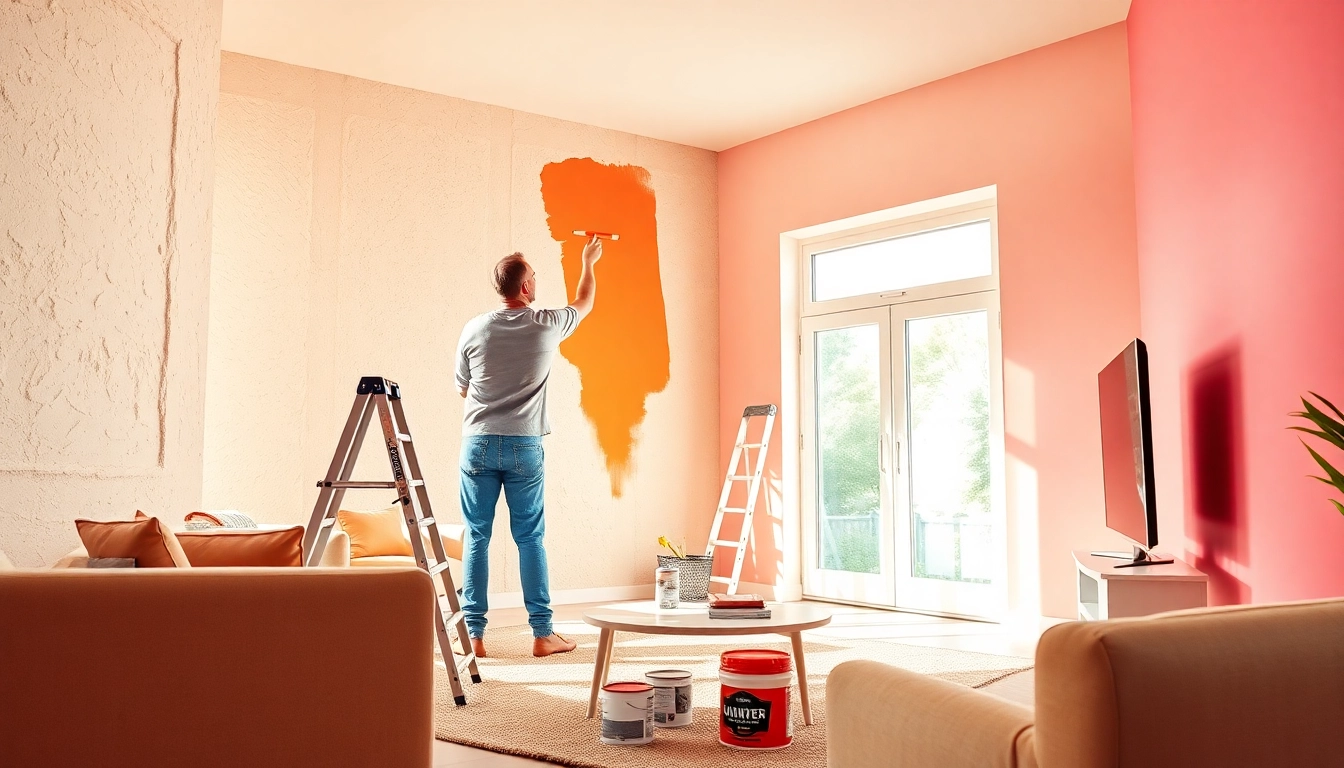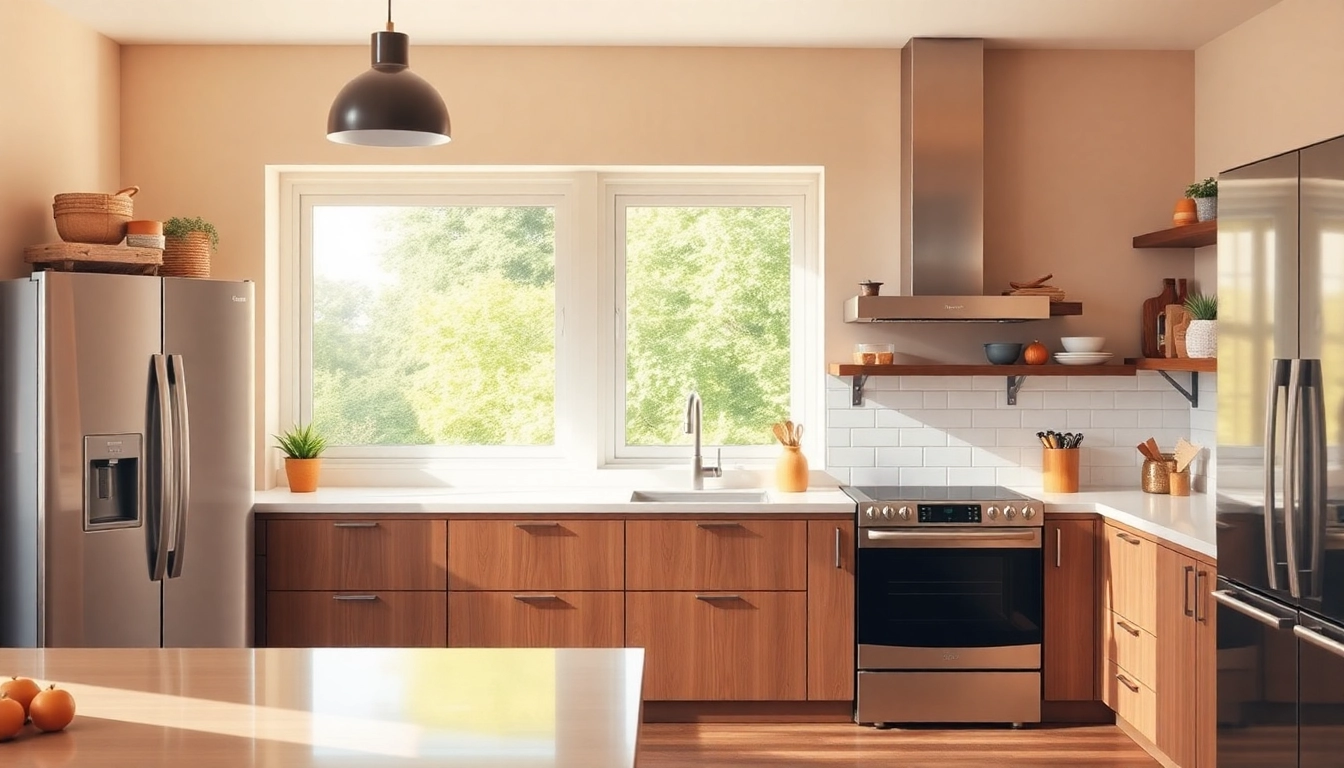Understanding the Basics of Interior Painting
Taking on an interior painting project can seem daunting at first, but understanding the fundamentals is key to achieving professional results. From choosing the right paint to preparing your space and learning effective techniques, this guide will walk you through the entire process of transforming your interiors with a fresh coat of paint. Whether you are a novice or looking to refine your skills, the following tips and insights will help you achieve a flawless finish.
Introduction to Interior Painting Techniques
Interior painting encompasses a range of techniques and styles that can dramatically alter the appearance of a room. Understanding and mastering various techniques can elevate your project and create a polished look. Here are some popular techniques to consider:
- Rolling: A common method for painting large wall areas, rolling helps cover surfaces quickly and evenly.
- Brushing: Ideal for smaller, intricate areas (like corners and trim), brushes ensure detail and precision.
- Spraying: Often used for larger spaces or when creating a specific texture, spray painting can produce a smooth, even coat.
- Sponging: This technique adds texture using a sponge to dab over a base coat, creating a soft, layered effect.
- Stenciling: A creative method that involves the use of templates to add patterns or designs to walls.
Choosing the Right Paint and Tools
Your choice of paint and tools will significantly impact the outcome of your project. When selecting paint, consider the following:
- Type of Paint: Latex paints are popular due to their ease of use and quick drying times, while oil-based paints offer durability and a smoother finish.
- Finish: Paint finishes range from matte to glossy. Choose a finish that complements the room’s function; for instance, satin or semi-gloss is ideal for kitchens and bathrooms due to their moisture resistance.
- Color Selection: Color can influence mood and perceived space. Test samples on the wall before making a final decision.
In terms of tools, invest in quality brushes, rollers, and trays. A good brush will hold more paint and provide smoother application, while rollers can cover large areas more efficiently.
Preparing Your Space for Painting
Preparation is crucial to a successful paint job. Here are steps to follow:
- Clear the Area: Move furniture out of the way or cover it with drop cloths.
- Clean the Walls: Dust and grime can affect paint adhesion. Wipe down surfaces with a damp cloth.
- Repair Damage: Fill in any holes, cracks, or imperfections with spackle or caulk.
- Apply Primer: Use primer to seal the surface and enhance paint adhesion, especially when changing colors dramatically or painting over darker shades.
- Tape Edges: Use painter’s tape to protect trim and create clean lines.
Cost Factors in Interior Painting Projects
Average Costs of Interior Painting
The cost to paint your interior can vary widely based on several factors, including room size, paint quality, labor, and location. On average, homeowners may spend anywhere from $1,800 to $10,000, depending on these variables. For instance:
- Bathroom (20 – 100 sq.ft.): $60 – $400
- Bedroom (200 – 310 sq.ft.): $600 – $1,240
- Kitchen (200 – 360 sq.ft.): $600 – $1,320
- Living Room (300 – 400 sq.ft.): $900 – $1,600
DIY vs. Hiring a Professional Painter
Deciding whether to tackle the project yourself or hire professionals can significantly affect your budget and the end result. Here are some considerations:
- DIY: Doing it yourself can save money, but it requires time, effort, and a willingness to learn new skills.
- Professional: Hiring an experienced painter ensures high-quality results, but will increase costs. Always check reviews and ask for estimates to find the best candidate.
Hidden Costs to Consider
When budgeting for an interior painting project, don’t forget to account for hidden costs that may arise:
- Preparation Costs: Expenses for cleaning, repairs, and priming can add up.
- Touch-Ups: Extra paint or labor may be necessary for touch-ups after the initial application.
- Furniture Moving: If you hire a professional, understand whether they will move furniture or if you’ll need to do it.
Interior Painting Tips for a Professional Finish
Brushes, Rollers, and Their Uses
Choosing the right tools can make a significant difference in the quality of your paint job:
- Brushes: Use angled brushes for cutting in around edges and trim. A 2.5” brush is ideal for walls, while smaller brushes are better for intricate work.
- Rollers: Opt for a roller with a nap appropriate for your wall texture. A shorter nap is suitable for smooth walls, while a longer nap is necessary for textured surfaces.
- Paint Trays: Using a tray ensures an even load of paint for efficient application, reducing chances of drips.
How to Create Clean Edges
Clean edges can transform the look of a paint job. Follow these tips for straight lines:
- Use Painter’s Tape: Apply tape carefully along edges, pressing down firmly to avoid paint bleed.
- Cutting In: Use a brush to paint a straight line along the edges, slightly overlapping the tape for better coverage.
- Remove Tape While Wet: For the best results, remove painter’s tape when the paint is still slightly damp to avoid peeling.
Importance of Primer and Proper Techniques
A high-quality primer is essential for achieving an even coat. Priming helps cover previous colors, seals porous surfaces, and ensures better paint adhesion. Additionally, employing proper techniques can further enhance the finish:
- Use Two Coats: Often, a single coat isn’t enough, especially when making dramatic color changes.
- Vertical and Horizontal Strokes: When rolling, use a consistent pattern to avoid lap marks. Roll in an ‘M’ or ‘W’ pattern to ensure even coverage.
- Feathering: Use light strokes to blend edges of wet paint into dry areas for a seamless finish.
Trends in Interior Painting Colors and Styles
Popular Interior Color Palettes for 2024
Colors can set the mood for an entire room. As we move through 2024, popular trends include:
- Earth Tones: Shades of brown, terracotta, and muted greens are on-trend, evoking warmth and comfort.
- Bold Dark Colors: Deep blues and greens can create a cocooning effect, ideal for smaller spaces.
- Minimalistic Neutrals: Shades of beige and gray are timeless and provide a versatile backdrop for various décor styles.
Accent Walls and Textured Finishes
Accent walls can add depth and interest to a room. Incorporating texture through techniques such as rag rolling or distressing enhances visual appeal. Here are some tips:
- Choose a Focal Wall: Select a wall that draws attention, often the wall opposite the entrance.
- Texture Techniques: Consider using a sponge or rag to apply different hues over a base color for depth.
- Contrast Wisely: Use contrasting colors to make your accent wall pop while remaining cohesive with the overall color scheme.
Seasonal Color Changes: Refreshing Your Space
As seasons change, so do trends and colors. Refreshing your paint can invigorate your space. Here are a few ideas for seasonal updates:
- Spring: Light pastels and bright colors reflect the season.
- Summer: Vibrant hues like yellows and bright greens can evoke a joyful ambience.
- Autumn: Earthy tones like burnt orange and browns integrate well with seasonal decor.
- Winter: Deep, rich colors create a cozy, inviting atmosphere for the cold months.
Maintenance and Care After Painting
Best Practices for Long-Lasting Paint
To keep your newly painted walls looking fresh, follow these maintenance tips:
- Regular Dusting: Dust walls regularly to prevent dirt buildup.
- Spot Clean: Use a mild soap solution to treat stains, testing in an inconspicuous area first.
- Avoid Harsh Cleaners: Steer clear of abrasive cleaners that can damage the finish.
How to Maintain Clean Walls in Your Home
Establish cleaning routines that fit your lifestyle. Regularly check for scuff marks and stains, and take care of minor issues before they become extensive. Consider these approaches:
- Quick Touch-Ups: Keep a small amount of leftover paint for touch-ups as needed.
- Create a Cleaning Schedule: Incorporate wall cleaning into your regular home maintenance tasks.
When to Repaint: Signs It’s Time for a Refresh
Knowing when to repaint can prolong the life of your interiors. Look for these signs:
- Fading Color: If your walls appear dull or discolored, it may be time for a refresh.
- Peeling or Cracking: These signs indicate a loss of adhesion and necessitate repainting.
- Wear and Tear: High-traffic areas often face greater wear; consider repainting every few years in such spaces.

